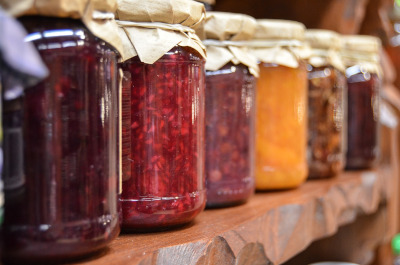Are you growing tired of the stacks of plastic you bring home from the supermarket? According to the European commission, the 40% of the plastic produced in Europe is destined for packaging. These are shocking data, but it is not the only alarming fact. What about the huge fridges and freezer which supermarkets are packed with?
Since history has always been the best of the teachers, let’s see how our ancestors managed with food packaging and preservation and maybe we will be inspired with some ecological ideas.
Ancient Egypt
Living in the desert, ancient Egyptian had to deal with exceptional differences in temperature range. As a consequence, they developed smart and effective ways to preserve and store food. Meat was steeped in lemon juice or scattered with salt. Fruit was dried in the sun, instead. Egyptian packaging for food consisted in jars or urns, which, once filled up, were sealed with clay. To prevent the clay from falling down on the food, a cup was put on the mouth of the jar or urn.
Egyptian were probably the first ones to use glass for packaging starting from 1500 BC. They worked it and melted it with other substances such as limestone, soda, sand.
Ancient Greece and Rome
Greek distinctive conservation method was honey, used for fruit and also wine. For the preservation of wine, they also used to add thyme and other aromatic herbs. They used vinegar for the fish.
Romans mastered the art of packaging, instead. Apart from the urns, where food ready for the shipping and the markets was put, they used special wooden or terracotta jars called dolia to store food which was not ready to be eaten, such as legume and grain to be dried, but they could also contain wine. Dolia were saved underground. The usual container for wine was called ampulla and it was a glass container for average quantities. Glass containers were also used for fruit storage. Later, Romans started using wooden barrels, made waterproof thanks to the tar spread on the inside, to store wine.
Paper from China
Chinese people have always been proficient in paper manufacturing. Actually, paper was invented in China around 100 BC during the Han dynasty. Nevertheless, they had already started to use mulberry tree barks to wrap food in the II century BC and since then their paper making techniques have improved and spread in Europe in the late Middle Ages. The first corrugated cardboard box was patented by an English company in 1817. This creation was possible thanks to Chinese invention of cardboard 400 years earlier, around XV century.
Napoleonic Era and metal packaging
In 1809 Napoleon was pushing for the invention of an effective method to save army’s food supplies. That’s how inventor Nikolas Appert came out with the first tinned can, which could preserve food safely if pressed with stannic and then sterilized. The classical cylindrical can was patented one year later by the English Peter Durant.
The history of plastic, instead, started around the middle of XIX century. Plastic packaging, however, began to be used in the ’50s and really took hold in the ’70s. Plastic packaging sector grew alongside supermarkets development. Therefore, we should really question the way we do the shopping and start using the good old methods, from the days when our grandparents used to go to the small groceries, equipped with empty jars and glass bottles ready to be filled up with unpackaged food.

https://pixabay.com/it/photos/marmellata-frutta-barattoli-428094/
SOURCES: https://ec.europa.eu/commission/presscorner/detail/en/ip_22_7155
https://blog.blancavite.com/2021/05/31/conservazione-del-cibo-metodi-tradizionali-e-moderni/#Come_avveniva_la_conservazione_del_cibo_nellAntico_Egitto
https://www.theguardian.com/business/2010/feb/01/supermarket-fridges-pollution
https://flex-pack.it/news/dai-primi-imballaggi-della-storia-fino-ad-ora/
https://www.caligolapalermo.it/la-conservazione-dei-cibi-nellantica-roma/#:~:text=I%20dolia%20e%20l’amphora,preservare%20la%20freschezza%20del%20cibo.
https://ambalaj.org.tr/en/environment-history-of-packaging#:~:text=Packaging%20has%20begun%20with%20natural,used%20for%20around%205000%20years.
